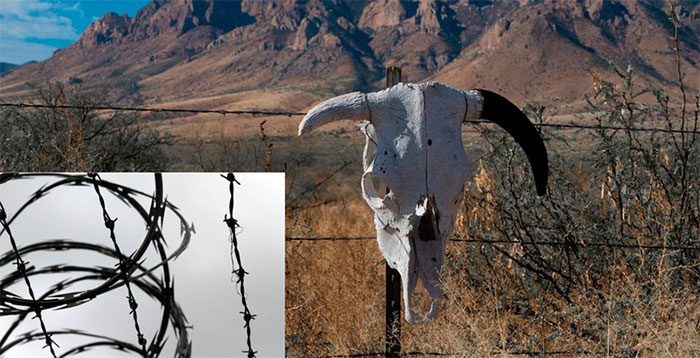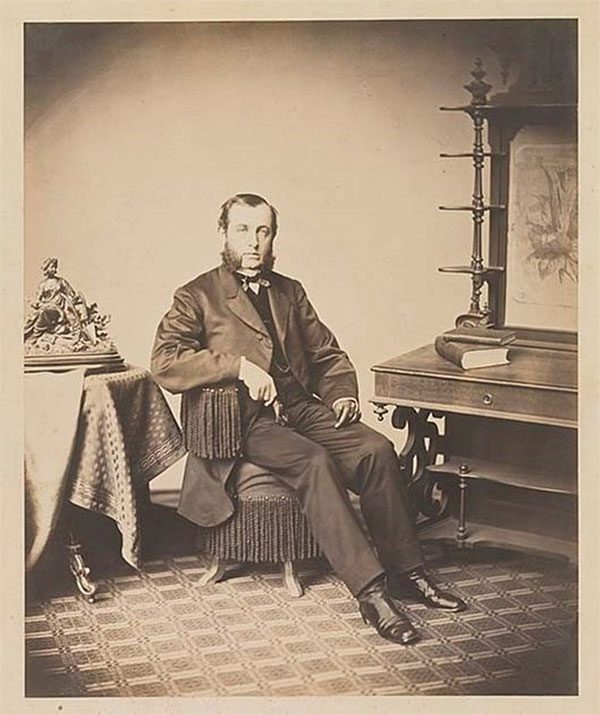On October 27, 1874, a farmer named Joseph Glidden in De Kalb, Illinois, USA, received a patent for his design of barbed wire featuring sharp points. He had no idea that his invention would have widespread implications even today.
Addressing Property Rights

Barbed wire preventing livestock from entering the territories of Western ranchers in the United States.
In 1862, U.S. President Abraham Lincoln signed the Homestead Act, which stated that “any honest citizen, including women and freed slaves” could be granted land up to 160 acres (65 hectares) in the Western United States, provided they built housing and cultivated the land for five years.
It sounded simple, but the reality was far from smooth. This was a vast, untamed land with tall, tough grasses more suited for nomads than settlers.
Previously, when Europeans came to seize fertile lands and pushed Native Americans westward, cowboys roamed freely, herding cattle across endless prairies, resembling an ocean more than a stretch of agricultural land.
After settlers arrived under the Homestead Act, they first needed to define their boundaries and find ways to keep wild cattle and livestock from destroying their crops. At that time, farmers often did not have legal rights to sue if a neighbor’s cow strayed into their unfenced land and ruined their crops. Even when the law was on their side, seeking compensation was a cumbersome process.
To protect themselves, they built fences from wood. However, wood was not readily available and had to be purchased at high prices from elsewhere. Another issue was that wooden fences were easily flammable. They could also plant thorn bushes around their land, but this took a significant amount of time. With the advent of barbed wire, farmers found it to be a useful tool for effectively protecting their crops.
Although barbed wire existed before Joseph Glidden’s invention, it was all handmade and inefficient. The process was labor-intensive, causing pain in the hands and arms, and the barbs were not fixed, moving around the wire. In contrast, Glidden’s barbed wire was created using a machine that wound the wires together and fixed the barbs at evenly spaced intervals as desired.

Joseph Glidden (1813 – 1906) invented barbed wire nearly 150 years ago.
Conflicts Arise
Since 1876, Glidden’s company produced over 1.36 million kilograms of barbed wire annually. Its popularity grew due to its low cost and relative ease of purchase. Additionally, Glidden’s product was heavily advertised by a man named John Warne “Bet A Million” Gates.
He gathered some of the most ferocious long-horned cattle in Texas, confined them within a barbed wire enclosure, and then wagered with the audience whether this seemingly flimsy fence could contain the aggressive animals. The audience quickly lost their bets as the fence held, even when a cowboy attempted to charge in, causing the cattle to scatter.
The invention and rapid adoption of barbed wire were great for ranchers but a nightmare for cattle herders, slaves, and Native Americans. Before the widespread use of barbed wire, livestock could graze freely, with the only competition among them being for water.
As ranchers began to enclose their 160 acres (65 hectares) of land, cattle herders grew angry as they became increasingly cut off from what they considered common resources. The winter of 1885 was particularly harsh, and cattle herders were said to have lost up to 75% of their livestock because the fences prevented their animals from accessing food.
Farmers used barbed wire not only to protect their crops from livestock but also to enclose slaves and drive away Native Americans. The nomadic tribes that had been forced off their ancestral lands were now further restricted in their movements to new locations. They despised it and referred to barbed wire as “the devil’s wire” because it not only prevented livestock from feeding but also injured them, causing infections that led to death.
In Texas, reckless cowboys cut barbed wire fences to allow cattle to pass through grazing land, leading to severe conflicts and violent confrontations, referred to as the “Fence Cutting War,” which required government intervention.
Nevertheless, barbed wire remains useful in modern life and is regarded as an impressive invention of the 19th century.
| In addition to serving as a barrier against intruding animals, barbed wire is also useful for establishing territorial boundaries. In 1909, it was installed to define the first border between Mexico and the state of California, USA. During World War I, both conflicting sides erected barbed wire in front of trenches to prevent direct attacks on the soldiers below. It wasn’t until the advent of modern tanks in 1916 that it was crushed under treads. |




















































